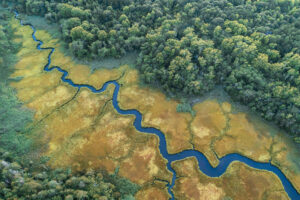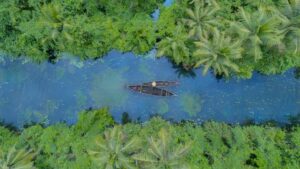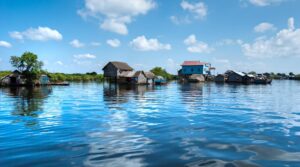SIWI's Source-to-Sea Programme
SIWI is a leading champion of source-to-sea governance and an expert in its implementation. We run pilot projects, generate new knowledge, organize training, and host the Source-to-Sea Platform.

A highly flexible approach
An overview of the source-to-sea studies and pilots reveals that the ongoing processes that each study or pilot contributes to is very diverse. This shows how flexible the source-to-sea approach is and how it can be tailored to a specific context and to a varied range of challenges.
Read the overview of the studies and pilots
Challenges across the source-to-sea continuum
A first step in applying the source-to-sea approach is realizing that a source-to-sea challenge is being faced. Such challenges arise when activities in one part of the source-to-sea system alter one or more source-to-sea flows (water sediment, biota, pollution, materials and ecosystem services) in a way that impacts another location in the source-to-sea system, either upstream or downstream of the activity.
Source-to-sea challenges cannot be addressed in isolation where the impact is being felt and must include actions outside the locality, sometimes hundreds or even thousands of kilometres away. Identifying the source-to-sea challenge provides the motivation for initiating the steps of the source-to-sea approach that will lead to coordinated management of the source-to-sea system. Several examples of source-to-sea challenges are identified in the report’s case studies.
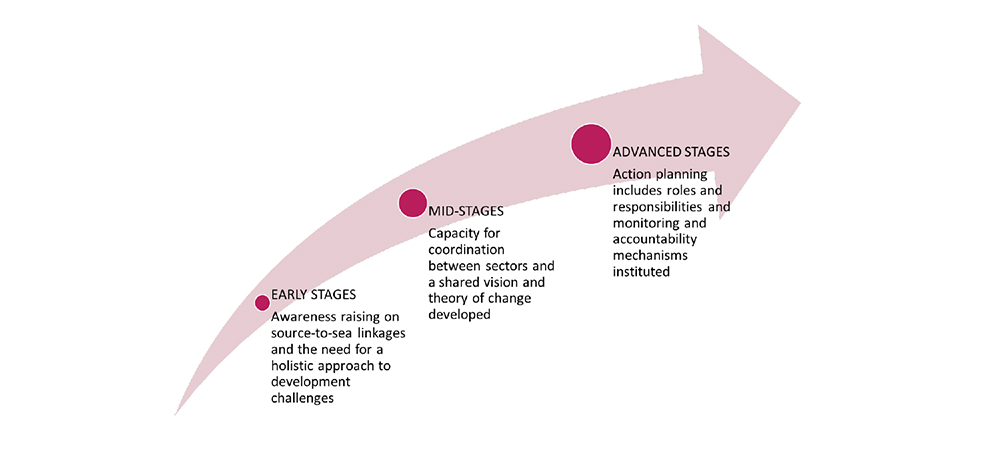
Readiness level
Each regional, national and/or local context will have a different level of readiness for undertaking source-to-sea management. Early stage is typically initial awareness raising of the linkages across the source-to-sea continuum, through to an advanced stage that has full implementation of action plans and cross-sectoral coordination.
Read about determining the readiness level
An analysis of stakeholder readiness levels in each of the studies and pilots shows the specific application of the source-to-sea approach in the different contexts. Based upon this analysis, the potential next steps can be devised, towards the full implementation of source-to-sea management in each of the locations.
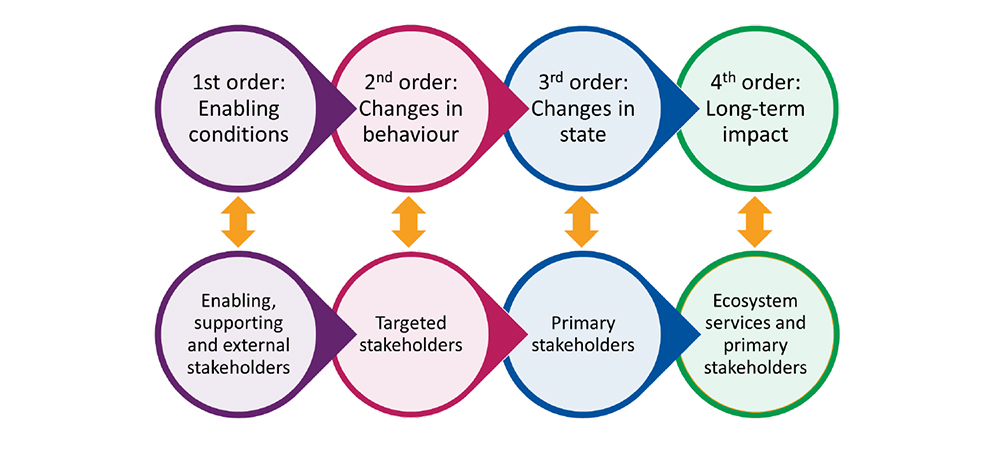
The four orders of outcome relate to specific stakeholder categories
The Bohai-Baltic Seas study developed a theory of change for each of the priority flows, in each basin. An interesting finding that came out of the exercise was how specific stakeholder categories relate to different orders of outcome.
Read about the relationship
Understanding the changes to key flows
The need for source-to-sea management emerges in locations facing one or more source-to-sea challenges. Such challenges arise when key source-to-sea flows are altered. These key flows connect land, freshwater, coastal, and marine ecosystems and activities that alter them in one location can have impacts upstream or downstream of these activities. Awareness of a source-to-sea challenge can surface when those who are being impacted by alterations in a key flow look for the origins of those impacts.
Understanding how key flows have been altered is a starting point for determining if a source-to-sea challenge is being faced and if source-to-sea management is needed.

Strengths of the source-to-sea approach
Source-to-sea management considers the entire source-to-sea system – stressing upstream and downstream environmental, social, and economic linkages and stimulating coordination across sectors and segments. The results of the analysis undertaken in the report provides a strong evidence base for the success of implementing the six step source-to-sea approach.
Read about the proven success of the source-to-sea approach
Recommendations to accelerate adoption of source-to-sea management
The analysis of the seven case studies presented in the report has been useful for understanding the opportunities and challenges for implementing source-to-sea management. It has also provided insights into the strengths and limitations of the six-step source-to-sea approach. While none of the case studies had completed the entire six-steps of the source-to-sea approach or demonstrated measurable benefits to the source-to-sea system from implementing priority actions, the cases do provide sufficient evidence that there is added value in applying the source-to-sea approach to address source-to-sea challenges.
The in-depth analysis provides the basis for recommendations on next steps toward a broader adoption of source-to-sea management:
Raise awareness of the need for source-to-sea management at all levels of government and catalyse source-to-sea action by mainstreaming source-to-sea thinking in the design and implementation of projects, plans, governance arrangements, and investments.
- Stimulate increased investment in better understanding the linkages across the source-to-sea continuum and to safeguard healthy ecosystems and livelihoods dependent upon ecosystem services.
- Incentivise, invest in and implement holistic management of land, freshwater, coastal and marine ecosystems to build the evidence-base demonstrating the benefits of source-to-sea management in addressing development challenges.
- Develop capacity in holistic source-to-sea management and establish governance that facilitates cross-sectoral behaviour change, coordination, and upstream-downstream cooperation in identifying solutions at the source.
- Innovate transformative, replicable, and scalable solutions that address source-to-sea challenges while enhancing livelihoods, ensuring equity, harnessing collective knowledge and sustaining ecosystems.

Source-to-sea management supports global policy commitments
The strength of the source-to-sea approach is its ability to home in on priorities that span across the social, economic and environmental dimensions of the broader 2030 Agenda. It can play an important role in ensuring that the linkages between the different goals, and their targets, are considered directly; particularly for SDG 6: Clean Water and Sanitation; SDG 13: Climate Action; SDG 14: Life Below Water and SDG 15: Life on Land.
Read about how source-to-sea management can support Agenda 2030
The seven case studies presented in this report were the first to apply the source-to-sea approach following the publication of Implementing the source-to-sea approach: A guide for practitioners (Mathews et al., 2019). As such, they have helped to illuminate some key factors related to its implementation.
The recommendations that came out of the analysis will expand the community of actors engaged in source-to-sea management, whether at the level of awareness raising and advocacy or all the way to being leaders in implementing source-to-sea management. They point to the need to enlarge the pool of knowledge about source-to-sea systems and increase the guidance on applying the source-to-sea approach to diverse issues and settings. Increased commitments to invest in the enabling environment for source-to-sea management as well as to fund source-to-sea projects are called for. Awareness raising, capacity development, and support for taking action on the ground are further essential ingredients to accelerate the benefits received through holistic management from source-to-sea.
SIWI's source-to-sea programme
SIWI is a leading expert on source-to-sea management, which offers new tools to make societies more sustainable and prosperous.
Find out more



